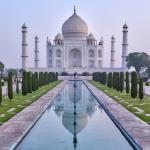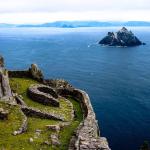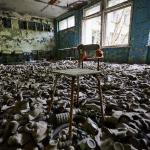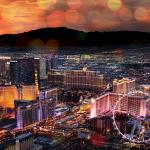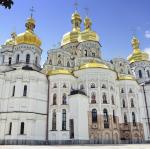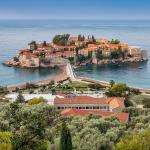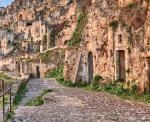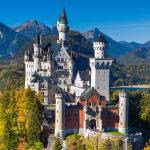Places to Visit Before You Die (Assuming You Have the Time, Money, and Inclination to Travel)

I’ve visited a lot of places, and I get a lot of people asking which one was the best. And that question is so subjective, with so many ways of approaching it, I honestly don’t know how to answer. A tropical paradise deluged by rainstorms is probably going to be miserable. A roadside diner serving a cherry lime rickey and disco fries might be the best place you’ve ever eaten, coming off a 16 hour road trip. So much of travel is kismet, most of the time you just have to hope for the best.
But there are some places which have stuck with me, which I still think about. That’s this list. I’ve tried to be ruthless; I haven’t listed places like Paris (which you should absolutely see) or the Eiffel Tower (which you should absolutely see if you visit Paris). If you travel a lot you’re bound to see Paris sooner or later, and if you don’t travel that much I really couldn’t say whether you should see Paris over London or London over Paris.
The places on this list are generally a little harder to get to and a little more idiosyncratic. My rule of thumb is: if you only traveled out to see this place, then immediately traveled home, would that trip have been worth it? I mean, don’t do that, spend a couple days, there’s plenty of great things in and around these places. But if you did, I wouldn’t hold it against you.
And take this all with a grain of salt. Most of these places are pretty cheap to visit, even considering the cost of travel. But some are not, and some require a significant investment in time to manage to get there, especially if you’re living on the wrong side of the world for them. This is my list. Look it over, stripmine it for ideas, and throw out anything that doesn’t sound so great or takes too long or doesn’t seem worth the money to you.
You get to write your own list. It’ll be better than mine. I promise.
In some ways, this is the reason I’m traveling. All I knew about it, really, was that it was one of the things you’re supposed to see. Before I really knew anything about the Mughal Empire, before I had read up on Shah Jahan, before I had heard of the calligraphy or the pietra dura or the gardens, I knew a bunch of people thought it was important, for some definition of important, to see it for yourself.
Sometime between the 6th and 8th centuries, some foolhardy group of monks in Ireland rowed out to an island 7km off the southwest coast and founded a monastery. They and their successors lived there continuously, about a dozen at a time, contemplating God amidst the storms and the tides and a truly unholy number of seabirds. They left late in the 12th century, although not before they had managed to carve a number of stairs from the shore all the way to the top of the island, where they constructed their monastery.
Thanks to the HBO miniseries, the story is fresh in everybody’s mind. The Soviets, largely through bad engineering decisions, suppression of critical safety information, and toleration of a toxic working environment, caused the worst nuclear accident in world history. The full extent of the damage was covered up for years. Eventually Pripyat was evacuated, and for decades the Exclusion Zone was forbidden for all but critical personnel. Over time it’s turned into a tourist spot — first for guerrilla explorers who illegally snuck into the site, then later for official tour groups, as the radiation gradually subsided and the potential for making money increased.
I like museums a lot, and I’ve been to quite a few of them. Mostly art, for me. And I’ve a particular fondness for Modern and Contemporary art. So your interests might be different — maybe you’re a fan of Impressionism, or Greek sculpture’s more your thing, or maybe you like history or science or aeronautics or something else entirely. So you can swap in whatever museum you want in here — the Prado, the American Museum of Natural History, the Museo Archeologico Nazionale di Napoli — there’s lots of choices, and dozens which deserve to be on this list.
Paris, like a lot of cities, has been running out of burial space for centuries. In 1785, the authorities of the city had a creative solution — transfer all the remains from the cemeteries into the abandoned quarries under the city. Over the next hundred or so years, a total of six million bodies were moved and reinterred, stacked up against any available surface. It’s been open to visitors on and off almost since it was created.
Most schoolchildren in the United States have a class on monarch butterflies. I went to school someplace that wasn’t really in the middle of their migration paths, but even so we had a whole thing on them, raising a few in a terrarium and seeing the whole caterpillar/chrysalis/butterfly lifecycle. I suppose it’s different in the South, or along one of the main migration routes, but I never actually got a sense they were going anywhere.
My mother loved Walt Disney World. I didn’t for a long while — its charms aren’t particularly well tuned to jaded teenagers, especially pre-Star Wars and Marvel acquisitions, but after I visited as an adult I think I started to get what she liked about the place. She wasn’t particularly sentimental, and I never really thought of her as being particularly into kids, so it wasn’t kind of the obvious reasons you might associate with Disney.
Las Vegas is in many ways the funhouse mirror version of Disney World. I’d say it was the adult version, but it certainly isn’t all that adult. Instead, it’s sort of what happens when you take Walt Disney’s idea — create a fantasyland to get lost in — and parcel it out to a thousand different people, all trying to make as much money as possible in whatever way they can think of.
In 1051, a group of monks founded a cave monastery in Kyiv. And while they eventually built some buildings aboveground (including a bell tower and a cathedral), they really extensively took over the caves, moving further and further into rock, eventually carving out a series of tunnels and chapels and storerooms. If that’s all they did it would be interesting enough. But the site is filled with what is delightfully known as “imperishable relics.
Traveling around the world, especially around Europe, you see a lot of cathedrals. Sad to say, they often all start to run together. I find myself remembering small details — the statues of Ecclesia and Synagoga at Notre Dame, the York Minster Semaphore Saints, the vertical tour through the vaults of the Cathedral of Saint John the Divine — more than the cathedrals as a whole. That’s part of why Copenhagen Cathedral felt so distinctive, to me.
When I was growing up, I bought a small comic book called Darwin for Beginners. It was an introduction to Darwin’s theories, as well as a surprisingly comprehensive survey of the reasons no one else had come up with the theory of evolution before he did. He’s one of those fascinating figures who stumbled upon one of the fundamental truths of the universe just before the world recognized it — Alfred Russel Wallace famously proposed the same theory just before Darwin published.
When I was in Montenegro, I headed a short drive down the coast from Budva to the island resort of Sveti Stefan. Mostly I was looking for a decent place to eat; I had been advised that the restaurant in the resort was open to the public. I didn’t know much more than that about the place. It had been a fishing village for centuries, but eventually was bought by the Yugoslavian government and turned into a top-end resort in the 1950s.
L. P. Hartley’s novel The Go-Between famously starts “The past is a foreign country; they do things differently there.” Nothing demonstrates that quite so starkly as burial customs. Cultures have all sorts of hangups over how to deal with their deceased. It’s easy to assume people used to eat mostly the same as we do now, or got married or threw parties in basically the same ways as now. Less easy to imagine they dealt with their dead in the same way when you’re staring at hundreds of bodies stacked like cordwood.
My dislike of beaches is fairly well known, at this point, as only someone whose ancestry runs through Scotland and contains skin cancer on both sides of their family can fully understand. And I generally dislike cruises, as well, of the sort that unload hordes of tourists at cruise terminals for three hours before lumbering off to the next port of call. I’m more a wander-through-every-nook-and-cranny kind of tourist, and I just don’t get the kind of time to explore that I’d like.
In the boot of Italy, close to Bari, you’ll find the city of Matera. It’s small, about 40,000 people, and is generally overrun by tourists — I’d recommend going off season to avoid the worst of the crowds. In many respects it’s a typical small Italian tourist town; you’ll find the usual assortment of gelato and pizza and trattorias. But the heart of Matera is the Sassi. Sassi means cave house, and the city is built over and around a steep, complicated cave system that’s been inhabited for around 9,000 years.
Built by King Ludwig II in southern Bavaria, Neuschwanstein is a operatic fantasia of what a castle should be. That makes sense, since Ludwig was an immoderate supporter of Wagner, also not exactly known for his restraint. The castle doesn’t make any sense as a historical structure; the rooms were fitted more as dramatic backdrops than as places for a functioning royal court. The rooms are just ridiculous, from the 15 meter high throne room gilded in gold to the grotto complete with dripstone cave walls and a lake with a functional boat.
When talking about Copenhagen Cathedral I mentioned how few cathedrals really stick with you. Well, the Sagrada Família absolutely does. Okay, so it’s technically not a cathedral. But that’s hardly the point. Antoni Gaudí left his mark all over Barcelona — seven of his buildings in the city are UNESCO World Heritage Sites — and he’s one of those sui generis artists whose style can’t really be categorized. He mostly, sort of, kinda fits within Art Nouveau, but all those melting waxwork forms and and shimmering columns of light really make his buildings something all their own.
